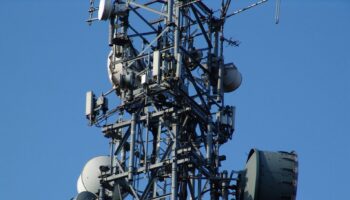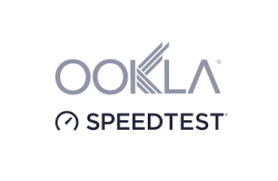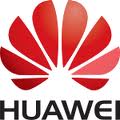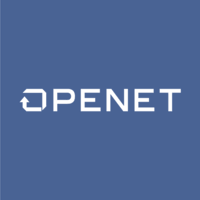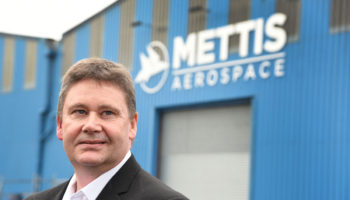 In its annual press conference to open the Mobile World Congress, Ericsson announced contracts and product launches that enable the rapid shift in real-time communications in business and society.
In its annual press conference to open the Mobile World Congress, Ericsson announced contracts and product launches that enable the rapid shift in real-time communications in business and society.
President and CEO Hans Vestberg talked about how technology and services leadership positions Ericsson at the forefront of industry transformation. Here are some highlights of released PR:
· Product launches in mobile broadband and services portfolio
· Guest speaker Diane Scott of Western Union joined Vestberg to talk about fast-tracking the next generation of m-commerce
· Ericsson market share in the mobile equipment market grew from 32{af589cdba9d77786c8c861317dbad60bba1e2ebbf56e2ffab874a1b59fde9ce3} to 38{af589cdba9d77786c8c861317dbad60bba1e2ebbf56e2ffab874a1b59fde9ce3} during 2011, according to preliminary estimates
President and CEO Hans Vestberg said: “The combination of leadership in mobile broadband, managed services and support solutions (OSS/BSS) gives us an unrivalled ability to support our customers in successfully monetizing the opportunities in a Networked Society.”
Vestberg looked back on a 2011 where mobile broadband uptake drove a strong market growth, although operator spending was slower in the fourth quarter. The strong portfolio, featuring the family of RBS6000 base stations, contributed to a gain in Ericsson’s market share. “Our early internal market data indicate that our market share in mobile network equipment grew from 32{af589cdba9d77786c8c861317dbad60bba1e2ebbf56e2ffab874a1b59fde9ce3} to 38{af589cdba9d77786c8c861317dbad60bba1e2ebbf56e2ffab874a1b59fde9ce3} during 2011,” Vestberg said.
Vestberg reiterated statements from the fourth quarter financial results: “We believe the industry fundamentals for longer term positive development remain solid. Short term, we expect operators to continue to be cautious with spending, reflecting factors such as macro-economic and political uncertainty. We will continue to execute on our strategy which means that the business mix, with more coverage and network modernization projects than capacity projects, will prevail short term.”
The convergence of mobility, broadband and cloud has advanced to a point where other industries are now activating strategies to combine these forces and bring them into business processes. One example in that sphere is m-commerce. Vestberg introduced a deal which makes operator MTN the first to deploy the Ericsson Converged Wallet platform. That is a new complementary service to the integrated pre-paid charging system and mobile financial services solution for MTN consumers in Africa and the Middle East.
“We are fully committed to building an m-commerce ecosystem, which is why it makes good sense to also announce our agreement with Western Union, the world’s largest provider of financial services,” said Vestberg.
Diane Scott, Executive Vice President and Chief Marketing Officer and President, Western Union Ventures, joined Vestberg onstage and said: “Together, Ericsson and Western Union can bring turn-key mobile money services to more places in the world than ever before – unlocking the power of financial services for millions of people worldwide.”
The availability of real-time services and applications from any device is fundamentally changing the way we live our lives. Ericsson research shows that people surveyed used 76{af589cdba9d77786c8c861317dbad60bba1e2ebbf56e2ffab874a1b59fde9ce3} of their time on smartphones for activities other than voice. We are accelerating quickly toward the networked society, where everything that benefits from a connection will have one.
“We are building networks that will be used for things we cannot predict. However, 130 years of experience tells us that network performance is a dealmaker. Our new contracts and product launches prove that we are keeping that top of mind. Services and technology leadership is key to us and we now hold 30,000 patents,” said Vestberg.
Ericsson is the clear LTE leader and recent wins include contracts with e-access in Japan, Open Mobile in Latin America, and Augere in India. “The two fastest-growing 4G markets in the world are North America and Korea, where Ericsson is supporting rollout of 4G quickly. This gives us unparalleled insight and experience of the high-traffic demands in 4G,” said Vestberg.
Ericsson presented new products and portfolio enhancements that enable unequalled network performance. Within services, Vestberg spoke about a new offering to address the rapid advent of smartphone usage and integration onto networks. Smartphone Network Optimization intends to keep a network in top shape for the increase in data traffic brought on by smartphone usage. Vestberg, whose career history includes building the Services portfolio for Ericsson, added that during 2011, the company added 13 IT managed services contracts among the 70 overall managed services deals.
In mobile broadband, the heterogeneous network (hetnet) approach offered by Ericsson offers a plan in densely populated areas that calls for boosting the macro layer first, then incorporating micro, pico, and Wi-Fi solutions. The solution delivers the same services with half the spectrum and with throughput gains of 2-10 times compared to using separate vendors for the macro and the small cell layer. In addition, Ericsson’s solution halves the total cost of ownership for the small cell layer. Vestberg showed the latest addition to the RBS6000 family, the new Pico RBS, the industry’s first Wi-Fi integrated pico radio base station.
The demand for Wi-Fi technology in mobile networks will continue to grow over the coming years, as it plays an important part of the overall mobile broadband user experience. To address that, Ericsson previously announced that it will acquire Canadian BelAir Networks, an industry leader in carrier-grade Wi-Fi.
In next generation IP networking, Ericsson announced a new application on the Smart Services Router (SSR) which is launching commercially in operator Telstra’s network in Australia. The Evolved Packet Gateway, when coupled with the SSR 8020, lifts capacity boundaries for 2G, 3G and 4G networks to meet the rapidly growing demand for mobile broadband services.
In addition to addressing the concern of capacity in big-city environments, Ericsson gave a nod to the need for design and attractiveness of its products. Vestberg displayed a concept product in microwave technology, the MINI-LINK ball-shaped microwave antenna. With the technological ability to support 1 GB throughput speeds, the small, round unit is unobtrusive in environments where appearances matter.

